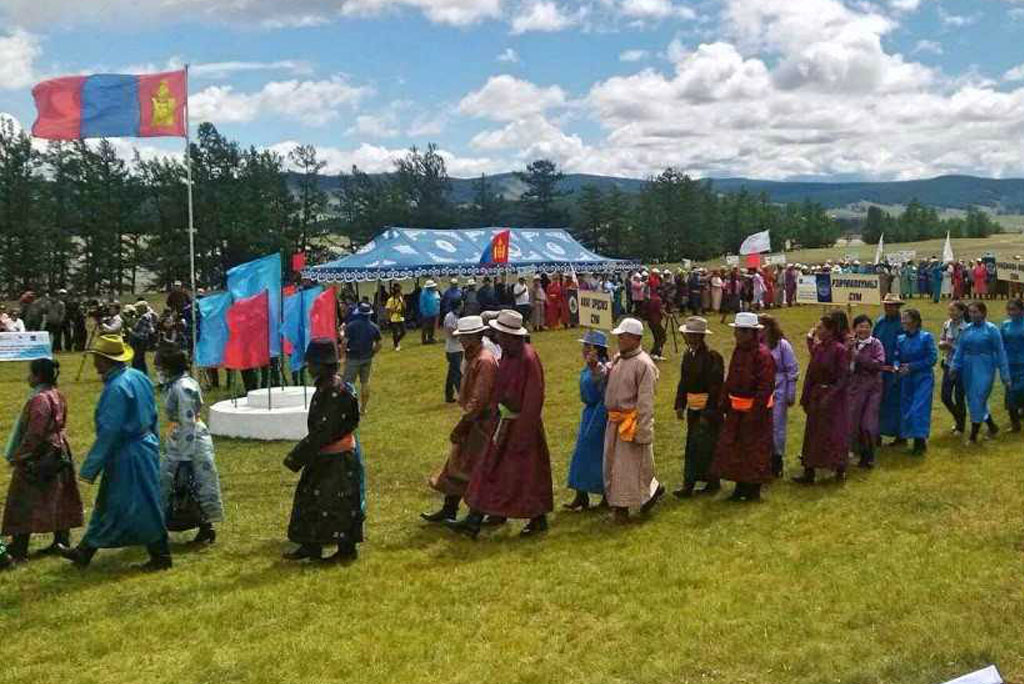East Asia Blog Series
Blue Skies and Green Steppe: Developing Sustainable Tourism in Mongolia
Mark R. Bezuijen 4 Mar 2019
Scaling up ecotourism in Mongolia requires a multi-sector approach that carefully balances conservation and development.
Mongolia’s stunning landscapes and nomadic culture form the basis for a small but rapidly growing tourism industry. Ecotourism—defined by the International Ecotourism Society as “responsible travel to natural areas that conserves the environment, sustains the well-being of local people, and involves interpretation and education”—can provide income for remote communities and revenue for protected areas.
These potential benefits are especially significant for Mongolia. Over 17% (27 million hectares) of the country is designated as parks and reserves – a vast and wild expanse of deserts, steppe, and snow-capped mountains across which herding traditions remain largely unchanged for thousands of years.
Mongolia’s development policies identify tourism as a new and important source of economic diversification and emphasize the need to support ecotourism within and around protected areas. Furthermore, Mongolia is a member of the Central Asia Regional Economic Cooperation (CAREC) Program, which has also prioritized tourism as a key tool for economic benefits.
Yet without planning, tourism can result in environmental and cultural impacts and yield few benefits for local communities. To achieve sustainable tourism development in Mongolia will require a focus on at least four key areas.
First, institutional policies and planning for development and conservation need to be integrated. Similar to many countries, Mongolia’s parks support people as well as nature.
To be effective, park management plans and local development plans must have complementary objectives and targets developed through stakeholder consensus, projections of population and tourism growth, urban and rural planning, and conservation science.
In addition to biodiversity conservation, park regulations and zoning should consider existing settlements, traditional herding lands, and other livelihoods. Facilitating such dialogue is complex but necessary and requires the participation of government, civil society, and the private sector.
At the level of individual parks and reserves, establishing tourism councils can give civil society a voice in tourism and park management. Such councils include village representatives, civil society groups and local government, and aim to foster information exchange and trust between stakeholders.
With time and training, tourism councils can evolve to become “destination management organizations” responsible for managing a park’s tourism, and free up park administrations to focus on conservation.
Tourism concession manuals are another important institutional tool. They establish procedures and environmental and social standards that tour operators are required to abide by, such as minimum standards for waste management, and prioritizing local value chains and employment of residents (e.g. for food supply or guiding).
Improved clarity in the conditions for license application and renewal also provides operators a more stable business framework in which to invest and plan responsibly. UNDP offers detailed guidelines for tourism concession management in Mongolia’s protected areas.
Mongolia sustainable tourism development must focus on 4 key areas
Second, public infrastructure for park management and tourism needs to be established or upgraded. Once clear management objectives for conservation, livelihoods, and tourism are embedded in park and development plans, carefully planned works may include:
- Access roads, power supply, and small recreational facilities (to sites zoned for tourism development).
- Barrier gates, car parks and signs (to regulate visitor access).
- Park headquarters and visitor centers (to serve as focal points for park and tourism management).
Collectively, such infrastructure supports park managers and improves the visitor experience through improved management of visitor access, traffic flows, and protection of core zones. Visitor centers provide tourists a sense of “arrival” and the opportunity to inform tourists of park regulations and local goods and services.
Third, waste management needs to be improved. Most parks in Mongolia lack organized systems for waste collection and disposal. As visitor numbers increase, litter and untreated sewage pollute soil and water resources, impact wilderness values, and reduce visitor satisfaction.
Solutions tailored to Mongolia’s arid landscape and the remoteness of many parks require a combination of approaches, such as:
- Low-cost, non-flushing toilet systems for tour camps, campsites, and car parks.
- Small, de-centralized wastewater treatment plants.
- Upgrading existing landfill sites.
- Mobilizing community waste management teams to operate and maintain public toilets and campsites.
Finally, park management needs more support. Protected area managers are often faced with limited funds, equipment, and incomplete management plans, yet are tasked with patrolling huge areas (on average, a single ranger in Mongolia is responsible for over 86,000 hectares) and addressing tourism, waste, and dialogue with multiple stakeholders.
These tasks require resources and diverse skillsets ranging from conservation science to stakeholder consultation. Measures include:
- Preparing comprehensive park management plans, which address tourism, livelihoods, and waste management as well as conservation.
- Training of park personnel, to empower staff to engage effectively with communities, tour operators, and other stakeholders.
- Providing field equipment (e.g. vehicles).
Basic infrastructure such as fee collection or ranger stations.
Developing tourism while conserving Mongolia’s beautiful wild places and timeless traditions will clearly be challenging. The issues introduced here illustrate the need for a multi-sector approach, in which diverse fields are brought together to balance conservation and development.
Many of these tools are being implemented with support from ADB under the Integrated Livelihoods Improvement and Sustainable Tourism in Khuvsgul Lake National Park project, a 4-year grant funded by the Japan Fund for Poverty Reduction, and new proposed Sustainable Tourism Development project for the country. As Mongolia moves forward with developing ecotourism, there will also be opportunities to learn from and contribute to regional experiences for tourism planning tailored to the cold yet fragile environments of the CAREC region.
Author

Mark R. Bezuijen
Senior Environment Specialist, East Asia Regional Department, ADB
This blog is reproduced from Asian Development Blog.


